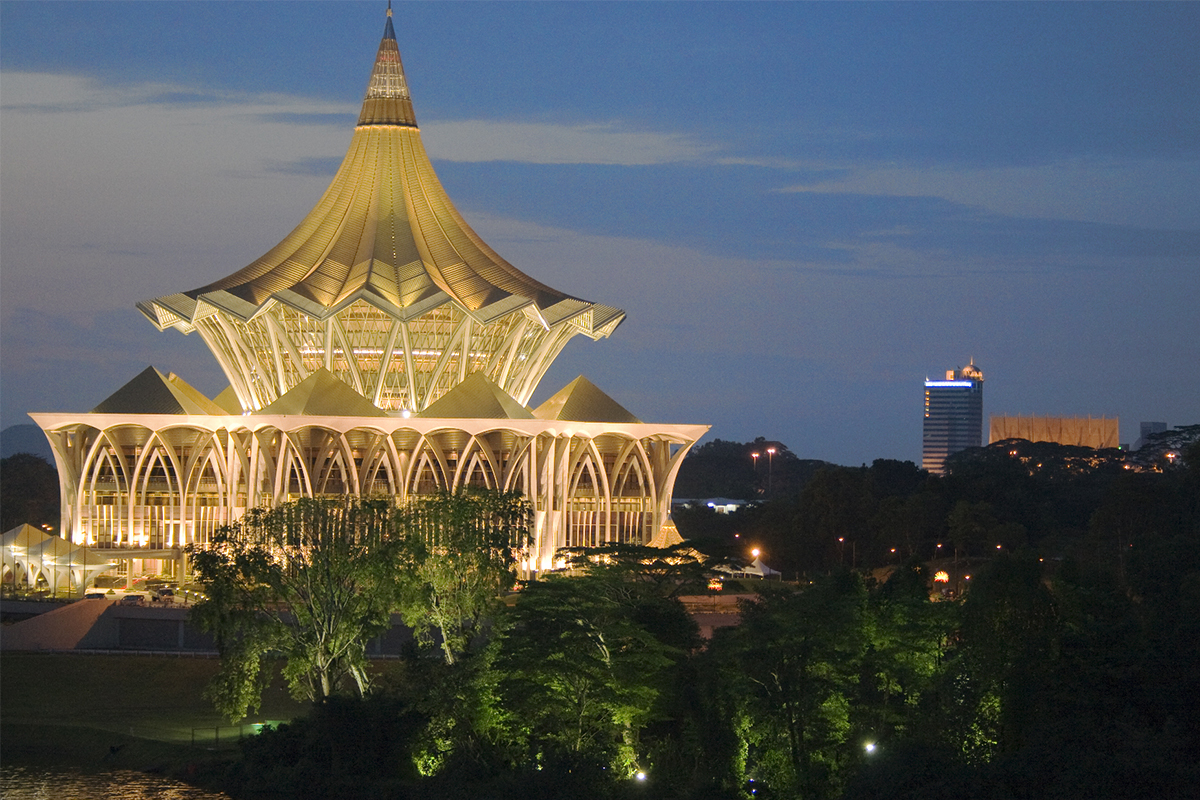Sarawak is Malaysia’s largest state. It lies in East Malaysia and shares the island of Borneo with the eastern state of Sabah, the separate country of Brunei and the Indonesian provinces of Kalimantan. With such a large land area, Sarawak is home to an incredible range of tropical bio-diversity. With a population of around 2 million, Sarawak’s rich ethnic diversity offers a unique local experience at the very moment you step off the plane.
Even by Malaysian standards, Sarawak has an extraordinary mix of peoples: the largest ethnic group is neither Chinese (26%) nor Malay (21%), but the Iban (29%), who gained worldwide notoriety as the fiercest headhunters on Borneo.
Back in the bad old days, an Iban lad couldn’t hope for the hand of a fair maiden without the shrunken head of an enemy to call his own, and bunches of totemic skulls still decorate the eaves of many a jungle longhouse.
Fortunately for visitors, headhunting hasn’t been practiced for a while, although some of the skulls date from as late as World War II when, with British support, Iban mercenaries fought against the occupying Japanese.
Other tribes of note include the Bidayuh (8%) and the Melanau (5%), as well as a smattering of Kenyah, Kayan and a group of tiny tribes in the deep heartland known collectively as the Orang Ulu (Malay for “upriver people”).
Sarawak is a place where commonality and peacefulness is a way of life. A paradise of adventure for the adventure buffs, from the land to the sea, from mild to vigorous, whatever the challenge; if you’re ready for it, you can be sure Sarawak will give you an experience like no other.
Getting There
Most visitors arrive in Sarawak by plane. The largest gateway is Kuching the state capital, which is about 1.5 hours away from Kuala Lumpur and Kota Kinabalu. Kuching city is a mixed of modernity yet cloaked with its rich historical charms.
There are also a few direct international flights from Indonesia (Pontianak, Bali and Jakarta), Bandar Seri Begawan, Brunei and Macau as well as Singapore flying in twice or thrice weekly. China’s Xiamen Airlines offers direct connections from Xiamen.
Other airports with domestic connections to Peninsula Malaysia on both Malaysian Airlines and Air Asia include Miri, Sibu and Bintulu. MASWings serves flights between cities and rural areas in East Malaysia, including Sarawak and Sabah. AirAsia also operates an international flight from Miri to Singapore four times a week.
Things To Do
Due to its mass land size, there are a few areas that should be highlighted and consider a must go. If you’re coming to Kuching, one must visit the Sarawak Cultural Village, some 45 minutes’ drive from Kuching. It is a living museum of different tribes and architecture spread over a lovely green area at the foot of Mount Santubong. You will be able to see how Iban, Melanau, Bidayuh, etc. tribes live, work and cook in the longhouses, each with its own identity.
It is also best to visit this place during the annual Rainforest World Music Festival which happens each July. The festival is held on the grounds of the Sarawak Cultural Village. Rainforest World Music Festival has been around since 1997 and its popularity is growing from year to year.
Accommodation around the festival grounds are snapped up as soon as bookings open so be quick. The three-day world music festival brings together some of the best world musicians for workshops and nightly live concerts.
Among the few national parks in this fascinating State, Bako National Park, Niah National Park and Mulu National Park are the three sought after natural sanctuaries.
Bako is by the coastal area, and known to be the home ground of the bizarre, obscene-nosed proboscis monkey. You can explore the seaside for its wonderful cliff formations, or take a hike up the hill for a breathtaking view of the entire coast line.
On the other hand, Niah is one of Sarawak’s better known national parks, important for its archaeological remains such as a 40,000 year old human skull, prehistoric cave paintings, and the birds nest industry. The caves are home to large colonies of bats and swiftlets.
Lastly, Mulu offers visitors a truly fantastic “Jurassic Park” like natural environment that it captured the attention of National Geographic, Discovery Channel and scientists alike. It is also one of the World Heritage Sited as sanctioned by UNESCO in Malaysia. With the mighty Mount Mulu, the pinnacles and some of the world’s largest cave system, it is not surprising that visitors from around the world come here to marvel at the remarkable sights year in and out.
From rainforest canopies to jungle wildlife, discover the diverse ecosystem of Malaysia’s largest state with us today!



